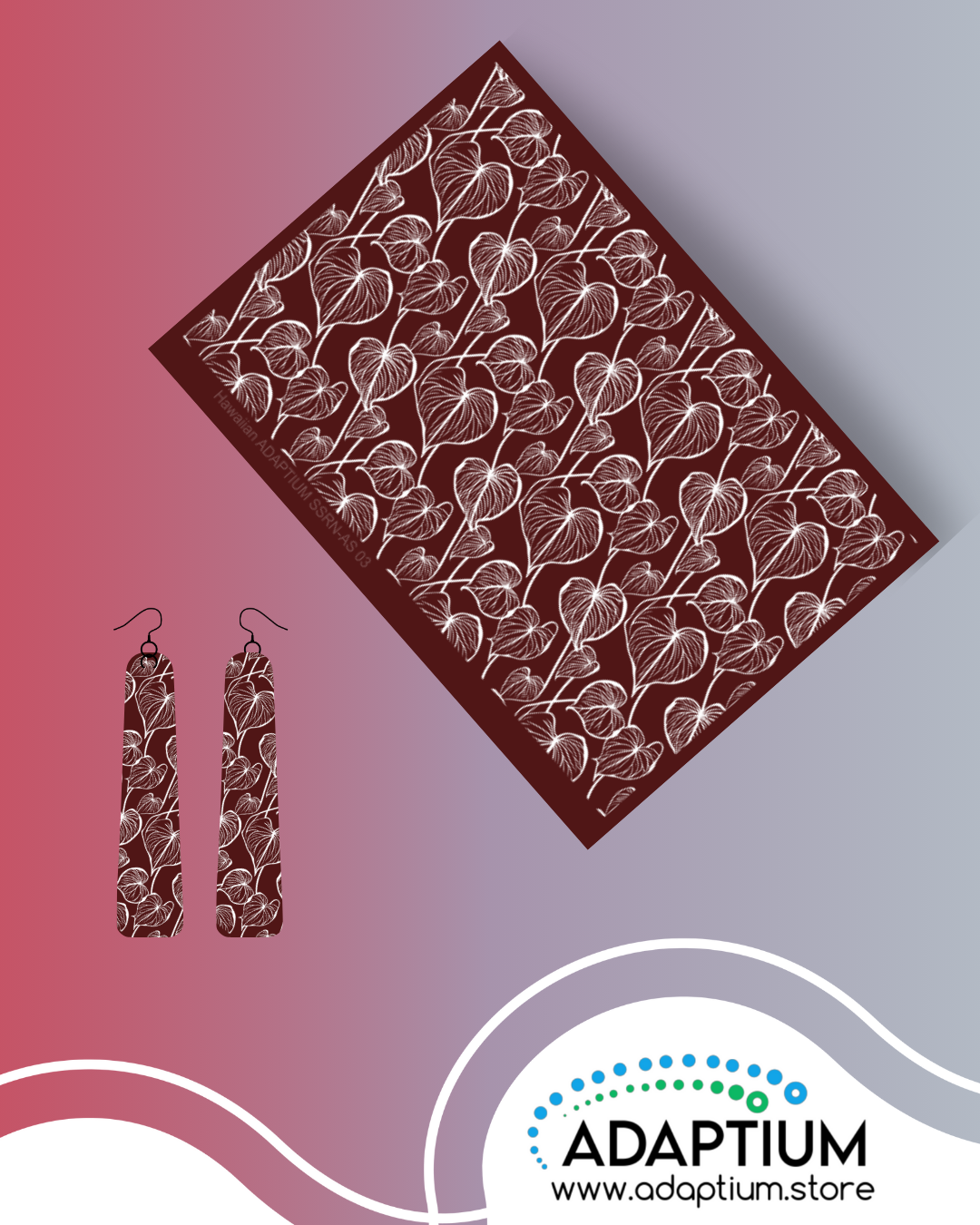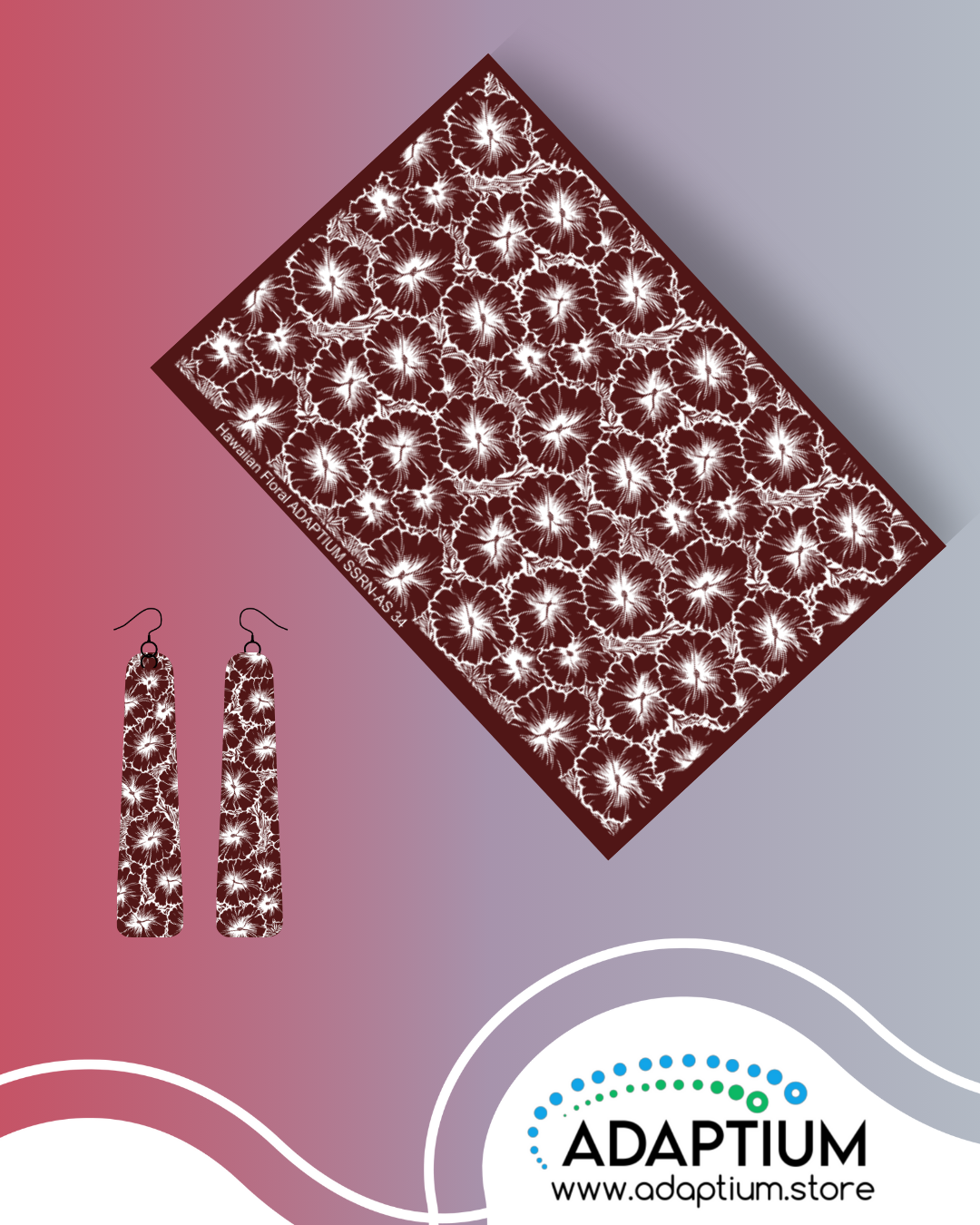1
/
of
4
Hawaiian Anthurium Leaf Silkscreen - SSCRN AS 03
Hawaiian Anthurium Leaf Silkscreen - SSCRN AS 03
No reviews
Regular price
$15.00 NZD
Regular price
Sale price
$15.00 NZD
Unit price
/
per
Taxes included.
Shipping calculated at checkout.
Out of stock
Couldn't load pickup availability
Anthurium Leaf fine mesh silkscreens for polymer clay
Inspired by lush Aotearoa greenery, the Anthurium Leaf Silkscreen brings natural elegance to your clay projects. The fine line art captures the soft veining of real leaves—perfect for artists who love organic flow and subtle detail.
Highlights:
- Fine mesh silkscreen featuring anthurium-style leaves
- Creates elegant botanical prints with crisp detail
- Ideal for polymer clay slabs and statement jewellery
- Durable and reusable with proper care
- Handmade in New Zealand
- Size approx 145mm x100
- Image: The coloured oblong represents the clay.
- Note: When using Silkscreens DO NOT allow paint to dry on screen. Clean immediately with a little warm soapy water Rinse & air dry flat
#polymerclaysilkscreen #hibiscusdesign #tropicalclay #floralpattern #adaptiumdesigns #claytools
You can click here to purchase the Cutter used in the photo.
HOW TO USE YOUR SILKSCREENS ON POLYMER CLAY:
1. Place the silkscreen shiny side down on your clay and burnish the silkscreen lightly so it makes full contact with the clay.
2. Put a line of paint along one edge. I recommend heavy body paint in a tube, but most paint will work fine if it is not too thick. A Thin paint will bleed under the silkscreen distorting your image.
3. Pull the paint across the screen with a squeegee or old credit card. Scrape excess paint off before lifting the screen or it can cause bubbles or texture and image to slip or shift.
4. Remove the screen by slowly lifting it up from one corner. Once removed, DONT let the paint dry, place the silkscreen in a dish of room temperature water until you can rinse it out.
2. Put a line of paint along one edge. I recommend heavy body paint in a tube, but most paint will work fine if it is not too thick. A Thin paint will bleed under the silkscreen distorting your image.
3. Pull the paint across the screen with a squeegee or old credit card. Scrape excess paint off before lifting the screen or it can cause bubbles or texture and image to slip or shift.
4. Remove the screen by slowly lifting it up from one corner. Once removed, DONT let the paint dry, place the silkscreen in a dish of room temperature water until you can rinse it out.
Note:
• Please allow for colour differences between screens.
• Materials may change without notice.
View this page to see more detailed instructions on: how to use Clay Transfer Paper on Polymer Clay.
Share








